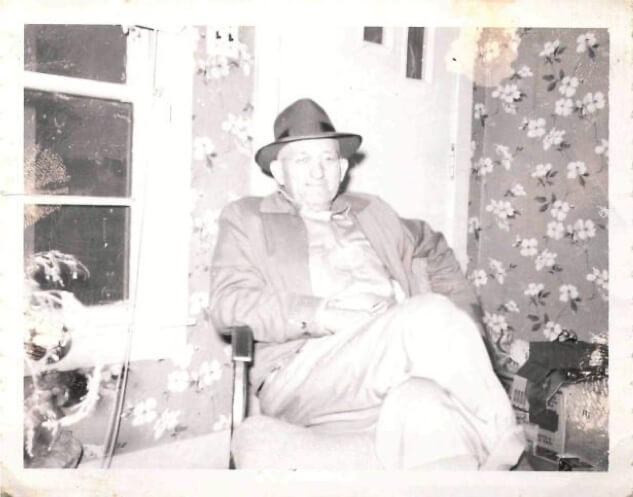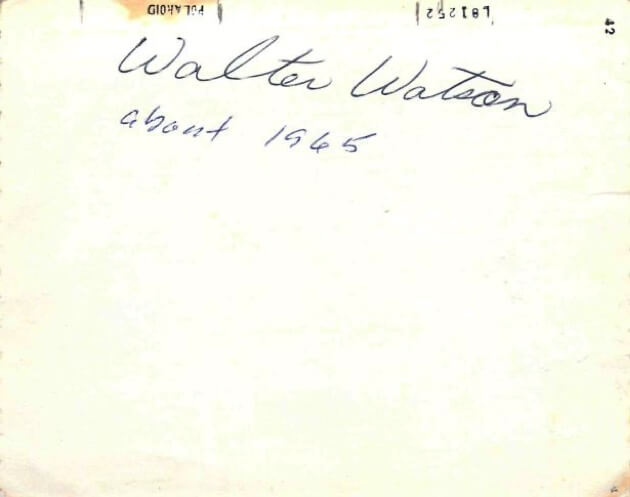The Fordson Tractor


In 1924, the year before I was born, my dad, Charley Watson bought a new Fordson Tractor. It had steel wheels, a metal pan seat, and a hand crank. He made the 1923, 1924, and 1925 crops with it while farming just south of Rome, Mississippi. At that time he had only an Oliver double gang disc with smooth blades as an implement. It afforded a method for cutting and breaking the ground into a nice mulch before the bedding of rows.
Later, in early 1927, the family moved to the farm rented from my wife’s (Nell) Grandmother Emma Chesteen. The Fordson continued to serve well in breaking the ground on that farm of slightly rolling table and flat bottom land. Dad’s farming was very productive. Miss Emma would entertain no offers of rental from others including step-children.
Uncle Walter (Watson) and Dad bought a sawmill. For several years the Fordson was the power unit for the mill. To utilize the Fordson as a belt-power unit, the first thing that had to be done was to dig a hole in the ground for the right front wheel to drop into. A round plate bolted to the right side of the tractor belly was removed and a flat pulley with an appropriate gear was installed. The belt was then routed from the pulley over the now lowered front axle to the larger pulley on the sawmill cabin (the main part). The Fordson’s four cylinder engine was a bit slow in sawing lumber and was replaced by a six cylinder Packard car engine in about 1932. But the Fordson had done double duty for years.
In about 1933, Dad purchased a Smalley Feed Mill from Woody Ware. His father, Dave Ware, had bought it at about the turn of the century to use in feeding his dairy herd. Dad paid Woody two dollars and the forgiveness of a special wrench borrowed and lost by Walter to strip the mill down to just the ensilage cutter that he wanted. Hosea Malone then restocked with wood and adapted the ensilage cutter to serve in cutting sorghum cane into silage for a newly dug trench silo. Uncle Walter then sharpened the knives, lubricated, and made the necessary adjustments on the cutter. The Fordson served as the power unit for this family’s built ensilage cutter. The first Fall came to cut and make silage. Dad engaged a dairying neighbor and cousin, Grady Burns, to come with his mule drawn corn and cane binder to cut, bundle, and tie the sorghum cane. Dad swapped work with the Biggers family to get them to help in bringing the bundles of cane from the field to the ensilage cutter at the silo.
Entire bundles of cane would be dropped onto the feeder trough of the cutter that Hosea had reconstructed. The feeder chains in the bottom of the trough would quickly push the cane through the cutting spiral knives. Three men carrying cane could not sate the cutter’s appetite. The old Fordson scarcely noticed the load.
The Fordson had greatly assisted my dad in being able to purchase land of his own in 1933. In 1936, Dad cleared $1,000.00 on a good cotton crop. He asked Mother if she wanted to buy a new car or build a new house on their farm. She wanted a new house. Dad and Dell Tidwell purchased four large virgin cypress trees from Ben King, a nearby farmer. Dell rented a wood shingle-cutting mill and Dad furnished a sawmill with power unit and Fordson to work the trees into shingles. The trees were cut into logs of multiple lengths of the shingles. The logs were then sawn into properly cut pieces. Then these long pieces were cut into shingle length billets by a swinging cutoff saw powered by the Fordson. The billets were cut into shingles on the rented shingle mill powered by the Fordson. The four trees produced shingles to cover two dwellings and two barns. The old Fordson didn’t miss a lick.
The Fordson sometime after that needed a major overhaul. Uncle Walter, Hosea, L.E., and William disassembled it under a shade tree down in the pasture beside the sawmill and fitted it with new bearing and piston rings. The rings only had to be filed at the break to the proper ring gap, but the bearings were of the solid type and had to be re-poured. This operation required the firing of the forge to melt the babbit. The babbit was then poured against the bearing saddle inside a home made mold. This was done with a small hand ladle resembling a water dipper. The bearings then had to be scraped and fitted. Since Hosea was a highly skilled, experienced blacksmith and Uncle Walter was a master mechanic, the job turned out well.
During the early part of the World War II, Dad contracted to cut twenty five cords of firewood for the Poplar Creek Elementary School. They had been using coal, but it was not available during the war. Dad and I cut poles and sawed them into heater length with the swinging cutoff saw powered by the Fordson. It was an exceedingly tiring job for me. The Fordson never complained.
By 1944, the Fordson was tired. I couldn’t keep it running. It would leak all the water out before one could get it started. Most times, when it did start it would sputter and pop and go dead shortly. If by chance you got it running, the refilling of the cooling system would cool the engine and again it would go dead. By June, I had managed to disc up only a small part of one field. I believe I turned the engine over more times with that crank than it turned under its own power. Dad finally gave in and replaced it with a new Ford Tractor with Ferguson System. It was a dream of a piece of machinery.
The old Fordson served for twenty years. It was sometimes a cantankerous machine. It had been operated by Uncle Walter, my bothers L.E. and William, Hosea at times, and finally by me. I never saw my dad drive it; even though, he did in the early years in the Delta. But it had helped my dad go from a sharecropper to a landowner and successful farmer.
The last time I saw it was before I went into the Army in September, 1944. When I returned home after the war, Dad had sold it to an old farmer who lived between Huntsville and French Camp. I never saw it after the war.
This was written by Roy C. Watson on December 6, 1990 at Jackson, Mississippi.